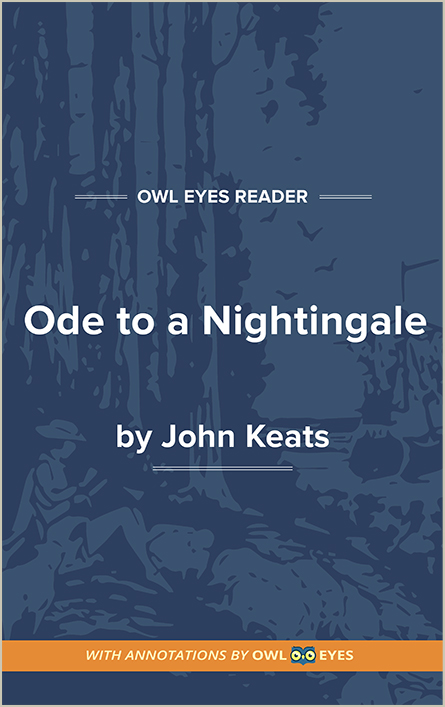- Annotated Full Text
- Literary Period: Romanticism
- Publication Date: 1819
- Flesch-Kincaid Level: 11
- Approx. Reading Time: 2 minutes
Ode to a Nightingale
John Keats wrote “Ode to a Nightingale” in the summer of 1819 during an outpouring of poetic production that resulted in four other notable odes. According to Keats’s friend Charles Armitage Brown, he and Keats shared a house in the London neighborhood of Hampstead that summer. One afternoon, Keats sat below a tree in the garden behind the house and, spying a nightingale, began to compose an ode to it. By the end of the day he had completed his “Ode to a Nightingale,” a stirring and intense meditation on mortality. The speaker of the ode confronts death and oblivion, registering the painful emotions arising within him. As the poem unfolds, the speaker considers various ways of confronting death: befriending it, forgetting about in a stupor of wine and revelry, transmuting it through the “wings of Poesy.” All the while, the speaker addresses the nightingale as if it were an emissary from some paradise he longs to visit. When the nightingale finally flies away, the speaker is left bewildered, wondering “do I wake or sleep?”
- Annotated Full Text
- Literary Period: Romanticism
- Publication Date: 1819
- Flesch-Kincaid Level: 11
- Approx. Reading Time: 2 minutes

